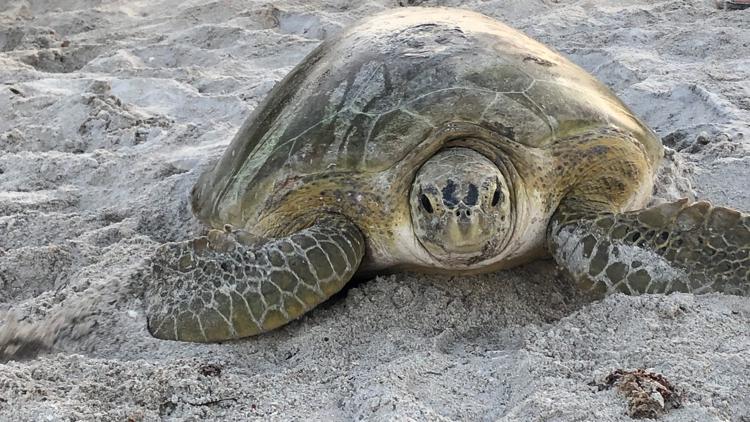CLEARWATER, Fla. — The official start of sea turtle nesting season is May 1 along the Gulf Coast, but the work to protect the sea creatures started weeks ago.
Each season, sea turtle trackers patrol up and down the coast before sunrise, looking for signs a mother turtle has laid her eggs. In recent years, sea turtle tracking has had an early start, simply out of necessity.
"We are starting to see pockets of turtles nesting a little bit earlier than in previous years," Wendy Hoeflich shared.
Hoeflich is the sea turtle conservation manager for Clearwater Marine Aquarium (CMA). She and her team ride ATVs up and down the shore, searching for turtle tracks.
This season, as well as in the last few years, the Florida Wildlife Commission has recommended sea turtle tracking begin two weeks ahead of the official start of the season.
Hoeflich said she doesn't know why we're seeing nesting happening sooner. In April, a few nests have already been documented.
"In fact, this past weekend they had one up in the Panhandle, which is very, very early. I believe they had one down in Sarasota this past weekend as well," Hoeflich said.
CMA monitors 21 miles of Pinellas County coastline. Between staff, interns, and volunteers, CMA has about 20 people on the turtle team. For hours in the early morning, the beaches are patrolled from April 15 to October 31.
Here are a few things you can do to help during nesting and hatching season:
Fill in any holes you dig along the beach. Even a small hole can be a canyon to a hatchling trying to make its way to the water.
Flatten any sandcastles you build before leaving the beach. Tiny turtles aren't able to climb atop a castle and can have trouble maneuvering around them when it's time to go to the ocean.
Pick up litter. Just as sandcastles create obstacles for hatchlings, so can litter. Leaving the beach exactly as you left it can help those who live on the beach this time of year: the turtle eggs.
Keep the beach dark at night. Hatchlings use the moonlight to guide them back to the water. If there are a lot of bright lights shining on the beach, it can disorient them. "If you're staying in one of our gorgeous hotels, please close your blinds at night. That can also be a deterrent to sea turtles," Hoefloch said.
It's estimated only one in 1,000 hatchlings makes it to maturity.
If you see a mother sea turtle making her way from the water to nest or see hatchlings taking their first crawl to the water, Hoeflich recommends keeping your distance, turn off lights, and leave them alone. Sea turtles are protected by federal law, making it illegal to touch them.
If you see hatchlings, call your local sea turtle trackers. For Sand Key, call the Clearwater Marine Aquarium rescue center.
Malique Rankin is a general assignment reporter with 10 Tampa Bay. You can email her story ideas at mrankin@10tampabay.com and follow her Facebook, Twitter, and Instagram pages.



